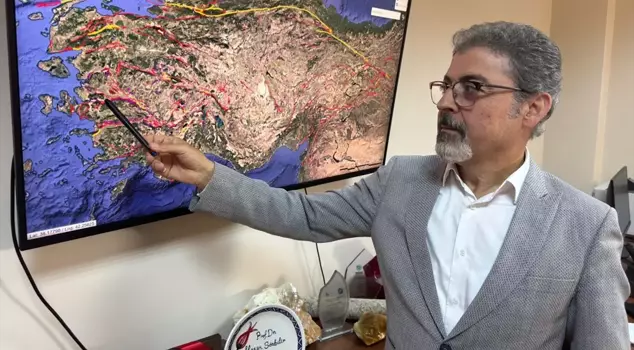
15.10.2025 16:02
Earthquake expert Prof. Dr. Hasan Sözbilir stated that there are 40 faults in İzmir, including those in the Aegean Sea, and that 17 of them are located on land. He emphasized, "The faults throughout İzmir are seismically active. We can particularly say that the time for significant earthquake production has come for faults such as the Tuzla Fault, Gülbahçe Fault, and Seferihisar Fault."
```html
Prof. Dr. Hasan Sözbilir, Director of the Earthquake Research and Application Center of Dokuz Eylul University (DEU) and Member of the Earthquake Science Committee of the Disaster and Emergency Management Authority, spoke about the recent earthquakes in Western Anatolia. Sözbilir reminded that 200 of the 485 active faults in Turkey are located in Western Anatolia.
"8 OF 200 FAULTS HAVE BROKEN, THE REST ARE WAITING TO BREAK"
Pointing out that the Western Anatolian crust is moving 40 millimeters southwest per year, Sözbilir stated, "There are nearly 200 faults within this crust that have the potential to produce earthquakes at certain periods. These faults have the capacity to generate earthquakes of magnitudes 6 and 7. In the last century, 8 of these faults have broken. All the remaining faults are waiting to break. When the time comes, they will produce earthquakes of certain scales and magnitudes." he said.
"SHOCKS DO NOT END IMMEDIATELY DUE TO THE EXISTENCE OF THE GEOTHERMAL SYSTEM"
Prof. Dr. Sözbilir noted that earthquake activity continues in the inner parts of Western Anatolia, stating, "Western Anatolia is a region with high geothermal potential. When the faults start to produce earthquakes, the existence of the geothermal system means that the shocks do not end immediately. Such a situation is also experienced in the Simav and Sındırgı faults." he expressed.
"GELENBE FAULT TRANSFERS STRESS TO 2"
Stating that earthquake activity continues in Simav, Sözbilir continued:
"The Simav Fault Zone is approximately 200 kilometers long and is divided into 7 different segments. Each has the potential for earthquakes between 6 and 7.2. The largest shock on this fault was the Gediz earthquake in 1970, which resulted in loss of life and property. Currently, earthquakes are occurring north of Simav. There is not much movement in the middle sections of the fault. However, there is a fault that develops perpendicular to the Simav Fault. The Gelenbe Fault... The characteristic of this fault is that it operates as a transfer fault. In other words, it transfers the stress it receives along its direction to the north or south. Instead of breaking itself, it can offer such a mechanism. Of course, it could break, but it transfers more stress. Therefore, if it transfers to the north, it could progress towards the Balıkesir fault. If it transfers to the south, then the Akhisar and Soma areas (in Manisa) could be in trouble."
"IT'S TIME TO PRODUCE EARTHQUAKES FOR 3 FAULTS"
Sözbilir stated that there are 40 faults in total, including those in the Aegean Sea, specifically in İzmir, 17 of which are on land. He noted that the last destructive earthquake centered in İzmir was in 1688, with a magnitude of 6.8, and recorded the following:
"At that time, nearly 10,000 lives were lost. There has not been a destructive earthquake in this region for about 337 years. The last one, as you may recall, was a 6.6 magnitude earthquake on October 30, 2020. It was centered in Samos. In other words, that fault was not one of our own faults in our territorial waters. Therefore, our own faults have not yet entered the breaking class. Since each of the 17 faults is classified as an active fault, they have the potential to produce an earthquake. There is a range for producing an earthquake. There are recent earthquakes they have produced, but these were not known. In our studies over the last three years, we have determined how often all the faults in İzmir produce earthquakes, when the last earthquake occurred, and how much time has passed since that earthquake. The faults in İzmir are seismically active. We can say that especially the Tuzla Fault, Gülbahçe Fault, and Seferihisar Fault have significantly reached their time to produce earthquakes, as our studies show. Therefore, we need to prepare İzmir as a city ready for earthquakes."
```